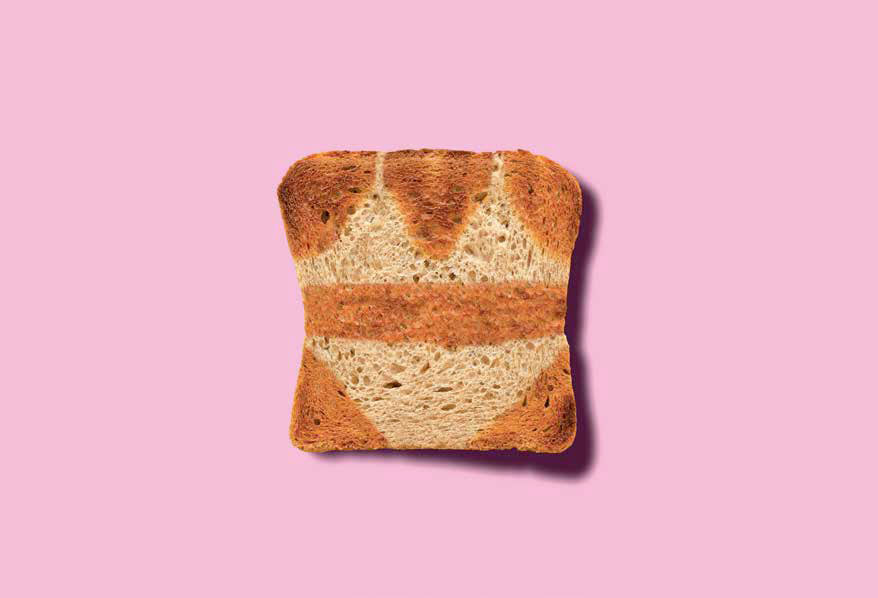Using coke or baby oil to get a better tan, thinking that the sun can’t burn you when the sky is grey or swearing that the UV rays aren’t there in the Winter. I guess SPF should be renamed FFS.
Using coke or baby oil to get a better tan, thinking that the sun can’t burn you when the sky is grey, or swearing that the UV rays aren’t there in the Winter. I guess SPF should be renamed FFS.

We all have that one friend that thinks going to the beach means lying in the sun for hours and hours, adjusting the position to make sure she’s roasting evenly. Usually, this one friend applies SPF once a day, when arriving at the beach, and uses SPF 30 on the first two times she goes out in the sun, exchanging it for SPF 10 or 15 when she gets the slightest tan. If you don’t have this friend - or aren’t this friend - it usually happens because, due to knowledge or fear, you choose to protect yourself from the sun and you’re aware of the dangers of unprotected sun exposure. Brands, media, and influencers are coming together to spread the sacred word that tells you to apply SPF daily, even if it’s raining or if you’re not even leaving the house, but even if we keep repeating it, I guess it isn’t consensual that getting sunburnt today is just stupid. You don’t even have to pardon my french, it's an even bigger stupidity if you think that skin cancer is the only one that can be prevented by using a cream and behaving responsibly when being in the sun.
Paulo Morais (@paulomorais_dermatologia) is a dermatologist and tells Vogue that besides being annoying to deal with a sunburn and with its different phases (redness, discomfort, itching, and flaky skin), the consequences of a sunburn can be very serious. “The early consequences of sunburn are the skin lesions and infections, with blisters and damage to the most superficial layer of the skin and skin sensitivity, that can last for weeks. However, solar burns can cause long-lasting damage that goes beyond the pain, redness, and discomfort in the short term. No matter how serious, the solar aggressions have a cumulative effect throughout the years, which means that these lesions are engraved in the “memory” of the skin, changing the DNA of the skin cells. The more your skin gets burned and the DNA mutations accumulate, the more it can lead to mutations and the development of skin cancer - which is the most common neoplasm in the world. Studies have shown that five or more solar burns double the risk of melanoma, a deadly type of skin cancer, but only one serious sunburn with blisters in your childhood or teen years can double the chance of melanoma. On the other hand, sunburns accelerate and accentuate skin aging, causing wrinkles and dark spots to appear earlier and appear more intense. The sun is, without a doubt, the most important element in the aging process, but it is an avoidable factor”, explains Paulo. A sunburn’s a skin burn caused by excessive and/ or unprotected exposure to UV rays, but it can also happen in a tanning salon since they also expel UV rays. The symptoms of sunburns can appear a few hours after sun exposure and include “skin redness, pain, burning sensation, edema, and blisters. The skin is hot to touch and can begin to flake a few days after. Symptoms like fever, shivers, and weakness can occur after extensive sunburns”, says the specialist.
But don’t worry, there is something we can do about it. The dermatologist Paulo Morais gives us some advice that we can execute this summer (and in the next, and the rest of the year, and always): “sunburns can be avoided by adopting a few measures that include it but aren’t just applying SPF. These measures include limiting the time you spend in the sun and completely avoiding in between 11 am and 5 pm, staying in the shade, using accessories like hats, sunglasses, and light clothes made with cotton or fabrics that offer sun protection. Children and the elderly should double the protection since they are more prone to serious sunburns with blisters. You also should be aware of any medication that increases the skin’s photosensitivity. The SPF with chemical, mineral, or both filters it’s a powerful ally in preventing sunburns, skin cancer, and skin aging and it should be used daily, no matter the time of the year or what you are doing. Even when the weather is cloudy or foggy, the risk of sunburns is still there, since 80% of the UV rays can penetrate the clouds. When you are in the water, you don’t feel the heat, but the effects of sun radiation can be felt, whether by the reflection of sun rays or because the water allows the rays to penetrate. Finally, the use of SPF shouldn’t make you feel completely safe and protected, making you stay in the sun forever without reapplying”.
We are not trying to touch a raw nerve or a raw burn, but we must insist that applying (and reapplying) SPF is one of the key elements to mitigate the damage caused by the sun and that the best antiaging is SPF. The best tip is to find an SPF that you really enjoy, making this a pleasurable step in your routine that fits in perfectly at the end of your morning skincare and before makeup (if that's the case). While choosing an SPF, keep in mind that it should be broad-spectrum, keeping you protected against the UVA and UVB rays, water-resistant, especially if you’re wearing it to the beach, and that you are applying enough of it. “The sun protective factor (SPF) refers to the protection against UVB rays and must be equal to or more than 30. The UVA protection should be at least a third of the SPF factor and it should be in the label inside a circle, next to the letters UVA, or in a plus format (like for example PA+++). The application should be done 15 to 30 minutes before sun exposure and reapplied throughout the day, every 2 hours, and after you go swimming, sweating, or drying off with a towel. An SPF 30 will protect you from 97% of UVB rays. However, to make sure your SPF is doing its job, it should be applied generously. Unfortunately, studies show that most people only apply 25 to 50% of the recommended amount of SPF and, because of that, using higher SPF could make up for applying too little of it. An adult needs 35 to 45 grams of SPF (about 1 shot glass or seven to nine teaspoons - one spoon to the face and neck, one for each arm, two for the torso, and two for each leg”, says the specialist. About reapplying and the different formats available in the market, like sprays, sticks, and powders, Paulo warns that it might be harder to make sure you’re applying the right amount with sprays, for example. “The SPF in cream, gel, or milk allows for a better perception of the amount you’re applying, something you can’t get with sprays. The challenge while using these textures is making sure you’re applying enough and covering everything. Sprays and cushions (liquid foundation in a compact) can be useful to apply and create reapplication habits. Sticks are great for smaller areas like the lips and around the eyes and for covering scars.” Bigger sticks like the Clear Suncare Stick (Shiseido) or the Glow Stick (Supergoop) with invisible formulas and no white cast are amazing to apply over makeup without disturbing it. But if you want to apply your favorite cream SPF without messing up your face makeup, here’s a tip: apply some product in the back of your hand and apply it with a beauty sponge. This way you won’t drag your face makeup and you will also be able to apply your SPF in layers, making sure you are applying enough. If you want a matte finish, go over it with a powder SPF.
But before you reach the one that should be the last step in your skincare routine, there are other ingredients, like antioxidants, that not only boost the effectiveness of your SPF but also help your skin to fight free radicals and oxidative stress. “Lots of SPFs go beyond sun protection, including ingredients that help repair the skin and prevent DNA damage that can lead to skin cancer. But there are also actives with an antioxidant action (botanical antioxidants, vitamin C and vitamin E, for example) that add benefits when paired with SPF and are an extra asset to protect the skin from UV rays”, assures Paulo. And if the moments before the sun and during the sun exposure are important, it is equally crucial to take care of your skin after exposing it to the sun, replenishing moisture and making sure that the skin stays healthy. “Along with SPF use to prevent skin damage, it is very important to hydrate and repair the skin from the damages caused by sun, sand, chlorine, salt, and wind. It is recommended that you use a moisturizer for your skin type and apply it at least once a day. After sun exposure, you can use an after sun since usually, these products are rich in moisturizing, soothing, and refreshing factors that repair the most superficial layers of the skin, soothing redness, and irritation and promoting a healthy and glowy tan”.
If all goes wrong and we are left to deal with the consequences, here's what to do: “If you get sunburnt, you should start the treatment immediately. The first step is to interrupt the sun exposure as soon as you feel the first symptoms. You can take a cold shower and, after that, dry off carefully and apply a moisturizer immediately and repeat until your skin is regenerated - you should avoid products with fragrance. You also should drink plenty of liquids to avoid dehydration. Some studies refer to the benefits of eating foods rich in pro-vitamin A like greens and fruits with bright colors (manga, papaya, pomegranate), due to their antioxidant properties. In case of blisters, do not pop them, they are working as a protection against infection. If the burn is more serious or if you have symptoms like dizziness, nausea, headache, or fever, you should look for a doctor. The symptoms usually go away in a few days, however, the consequences are ‘engraved’ at the molecular level and in a visually imperceptible way”, warns the specialist. “Although the population is increasingly informed about the risks of unprotected and exaggerated sun exposure, sunburn continues to have a high prevalence. In fact, sunscreens are not meant to increase the amount of time spent in the sun, but rather to increase protection when exposure is unavoidable. The protection they ensure depends on their correct application. It is extremely useful, but it works when photoprotection is seen as a whole and includes: the avoidance of the sun or staying in the shadow in the hours of greatest sun intensity, the use of protective clothing and accessories, daily application of sunscreen (and not just during vacations) and consulting the ultraviolet index on the day and place where you’ll be sunbathing”. If by chance you were in the sun while reading this article: it's time for sunscreen.
Translated from the original article from Vogue Portugal's Nonsense Issue, published July 2020.Full credits and story on the print issue.
Most popular


Relacionados
.jpg)


LightHouse Publishing x Street Smash Burgers: uma noite no escritório da Vogue Portugal
19 Dec 2025
 (14).png)


